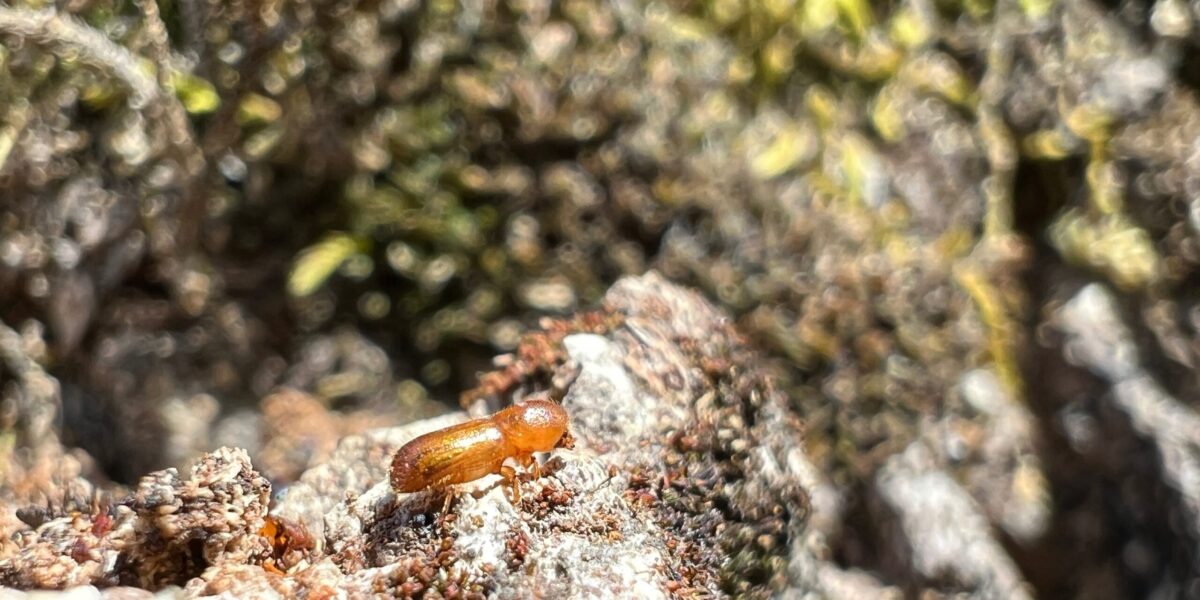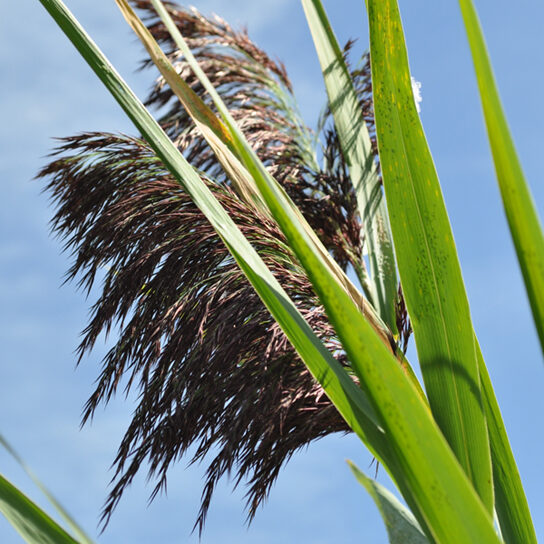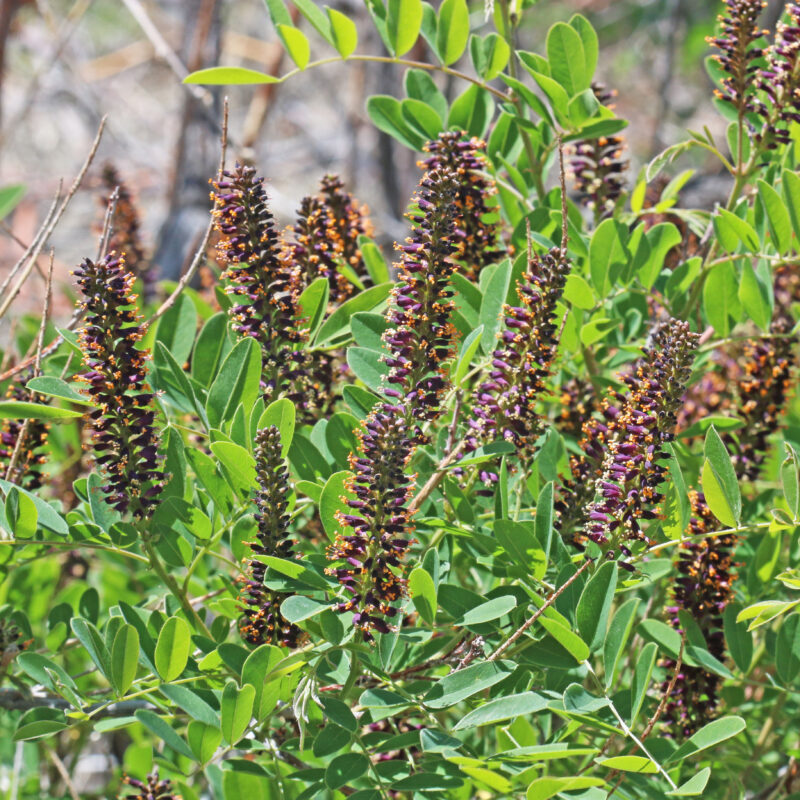The Mediterranean Oak Borer (MOB) is a tiny beetle that spreads fungus as it drills into oak trees, which eventually kills the trees.
MOB infestations have already been found on over a dozen oak trees in the North Willamette Valley, and particularly concerning is their targeting of Oregon White Oak trees (Quercus garryana). Oregon white oaks are important to the human culture and ecology of this area, and are resilient to increasing high heat and droughtDrought A longer than normal time with not enough rain conditions. Because of this threat from the MOB, we are relying on community scientist sleuths to help agency staff to identify any other infestations and stop the spread of the MOB!
The Oregon Department of Forestry has been documenting the nature of MOB in Oregon and California, where is has been causing problems for the last decade. In Oregon, it hasn’t become an unstoppable infestation yet.
Visit the MOB Infestation Dashboard to see the status on MOB in Oregon.
What can you do?
- Learn to recognize Oregon white oak trees
- Map any mature oak trees you find on iNaturalist.
- Don’t move firewood! Don’t move firewood and only move treated wood! It is crucially important to prevent the introduction of the MOB to new areas. If you use firewood, buy and use it within 10 miles of harvest location. Only move firewood and wood pallets that have been heat-treated and certified as pest-free. Transport of firewood, wood pallets, and nursery stock are major pathways for the spread of destructive non-native insects.
- Finally,
If you Spot the Signs, Report!
MOB is a tiny beetle that looks a lot like other insects that live in/around oak trees, so invasive species specialists are not asking people to look for the MOB itself. Instead, look for the key signs that they are infesting oak (genus: Quercus) trees, particularly Oregon white oaks (Quercus garryana).
- Dying branches: Dead or dying oak trees or branches, particularly high up in the canopy.
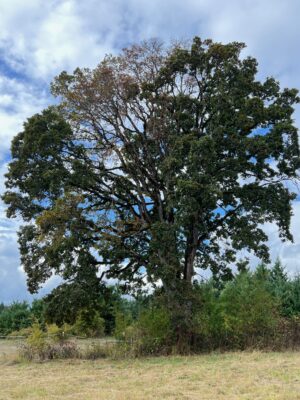
When you see upper parts of an oak tree dying, check for other signs of Mediterranean Oak Borer and make a report!
- Dusty trunk: When the MOB drills into the tree, it leaves dust or “frass” (made of its waste plus sawdust of the tree) on the tree trunk and/or at the base of the tree.
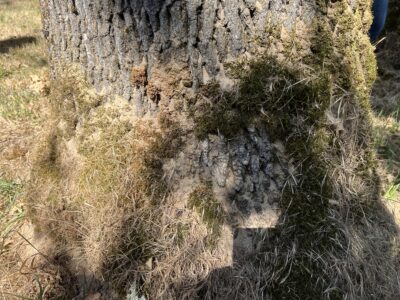
The part of this picture that looks like sawdust (at the bottom of the tree and in its indentations) is actually frass, which is the part of the tree that the MOB chews through, mixed with its waste. Seeing it on the trunk of a tree is a sign of Mediterranean Oak Borer infestation. Photo by Christine Buhl.
- If you see both of these signs , make a report to OregonInvasivesHotline.org.
If you love sleuthing out invasive and destructive bugs, check out our post on the Emerald Ash Borer and help slow the spread!
If you have an Oregon white oak tree on your property with multiple acres of open land and want support to create and expand a healthy and diverse habitat for it, contact Senior Conservationist Kammy Kern-Korot.
